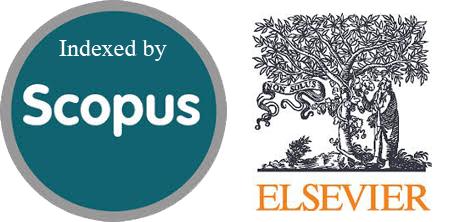Evaluating Genetic Obesity Interventions: A Survival Analysis Approach
DOI:
https://doi.org/10.54133/ajms.v8i2.1926Keywords:
Metformin, Obesity, Ozempic, Saxenda, SurvivalAbstract
Background: Obesity, particularly when influenced by genetic factors, poses significant challenges for effective weight management. Objective: This study evaluated the efficacy of three medications—Metformin, Ozempic (semaglutide), and Saxenda (liraglutide)—in promoting weight reduction. Methods: A total of 165 participants were included in the study, with 70.9% classified as obese. Participants were treated with Metformin, Ozempic, or Saxenda, and their weight loss outcomes were monitored. Kaplan-Meier survival analysis was used to assess time-to-weight reduction, and Cox regression analysis was employed to identify predictors of weight loss. Results: GLP-1 receptor agonists (Ozempic and Saxenda) demonstrated significantly greater weight reduction compared to metformin (p<0.001). Mean weight loss was 8.72 kg for Ozempic and 9.81 kg for Saxenda, compared to only 1.17–1.18 kg for Metformin. Kaplan-Meier analysis revealed that participants on Ozempic and Saxenda achieved weight reduction faster than those on Metformin (p<0.001). Cox regression analysis identified physical activity as the only significant predictor of weight reduction (HR = 1.64, p=0.006), while age, diet, and smoking status were not statistically significant. Conclusions: GLP-1 receptor agonists (Ozempic and Saxenda) are highly effective for weight reduction in individuals with obesity, particularly those with genetic predispositions, and should be considered as first-line treatments. Physical activity plays a critical role in enhancing weight loss outcomes and should be integrated into obesity management plans.
Downloads
References
World Health Organization. Obesity and overweight [Internet]. 2022 [cited 2024 Jan 15]. Available from: https://www.who.int
Loos RJF. Genetic determinants of common obesity and their value in precision medicine. Nat Rev Endocrinol. 2020;16(6):360-370. doi: 10.1038/s41574-020-0347-7. DOI: https://doi.org/10.1038/s41574-020-0347-7
Farooqi S, O’Rahilly S, Yeo GSH. Genetic obesity syndromes. Nat Rev Endocrinol. 2019;15(9):581-594. doi: 10.1038/s41574-019-0221-7. DOI: https://doi.org/10.1038/s41574-019-0221-7
Locke AE, Kahali B, Berndt SI, Justice AE, Pers TH, Day FR, et al. Genetic studies of body mass index yield new insights for obesity biology. Nat Genet. 2019;51(4):588-597. doi: 10.1038/s41588-019-0373-3. DOI: https://doi.org/10.1038/s41588-019-0373-3
Zaidan SR. Polymorphism of human (CTLA4) gene and insulin-dependent diabetes mellitus associated with obesity in Iraqi population. Res J Med Sci. 2011;5(5):286-288. doi: 10.3923/rjmsci.2011.286.288. DOI: https://doi.org/10.3923/rjmsci.2011.286.288
Shungin D, Winkler TW, Croteau-Chonka DC, Ferreira T, Locke AE, Mägi R, et al. New genetic loci link adipose and insulin biology to body fat distribution. Nature. 2015;518(7538):187-196. doi: 10.1038/nature14132. DOI: https://doi.org/10.1038/nature14132
Clément K, van den Akker E, Argente J, Bahm A, Chung WK, Connors H, et al. Efficacy and safety of setmelanotide, an MC4R agonist, in individuals with severe obesity due to LEPR or POMC deficiency: single-arm, open-label, multicentre, phase 3 trials. Lancet Diabetes Endocrinol. 2020;8(12):960-970. doi: 10.1016/S2213-8587(20)30364-8. DOI: https://doi.org/10.1016/S2213-8587(20)30364-8
Wilding JPH, Batterham RL, Calanna S, Davies M, Van Gaal LF, Lingvay I, et al. Once-weekly semaglutide in adults with overweight or obesity. N Engl J Med. 2021;384(11):989-1002. doi: 10.1056/NEJMoa2032183. DOI: https://doi.org/10.1056/NEJMoa2032183
Apovian CM, Aronne LJ, Bessesen DH, McDonnell ME, Murad MH, Pagotto U, et al. Pharmacological management of obesity: An Endocrine Society clinical practice guideline. J Clin Endocrinol Metab. 2019;104(2):122-140. doi: 10.1210/jc.2018-02481. DOI: https://doi.org/10.1210/jc.2018-02481
American Diabetes Association. Pharmacologic approaches to glycemic treatment: Standards of Medical Care in Diabetes-2021. Diabetes Care. 2021;44(Suppl 1):S111-124. doi: 10.2337/dc21-S009. DOI: https://doi.org/10.2337/dc21-S009
Knowler WC, Barrett-Connor E, Fowler SE, Hamman RF, Lachin JM, Walker EA, et al. Reduction in the incidence of type 2 diabetes with lifestyle intervention or metformin. N Engl J Med. 2002;346(6):393-403. doi: 10.1056/NEJMoa012512. DOI: https://doi.org/10.1056/NEJMoa012512
Nieuwenhuis-Ruifrok AE, Kuchenbecker WK, Hoek A, Middleton P, Norman RJ. Insulin sensitizing drugs for weight loss in women of reproductive age who are overweight or obese: Systematic review and meta-analysis. Hum Reprod Update. 2009;15(1):57-68. doi: 10.1093/humupd/dmn043. DOI: https://doi.org/10.1093/humupd/dmn043
UK Prospective Diabetes Study (UKPDS) Group. Effect of intensive blood-glucose control with metformin on complications in overweight patients with type 2 diabetes. Lancet. 1998;352(9131):854-865. doi: 10.1016/S0140-6736(98)07037-8. DOI: https://doi.org/10.1016/S0140-6736(98)07037-8
Foretz M, Guigas B, Viollet B. Metformin: From mechanisms of action to therapies. Cell Metab. 2019;30(1):24-35. doi: 10.1016/j.cmet.2019.09.003. DOI: https://doi.org/10.1016/j.cmet.2019.09.003
Rodriguez-Lopez R, Acosta A, Lemos T. Genetic and environmental interactions in obesity: Insights from twin studies. Obes Res Clin Pract. 2020;14(1):78-89. doi: 10.1016/j.orcp.2020.01.001. DOI: https://doi.org/10.1016/j.orcp.2020.01.001
Zaidan SR, Schüer J. Interaction studies of insulin degrading enzyme (IDE) with a model membrane. Front Health Inform. 2024;13(4):757-774. doi: 10.52783/fhi.vi.1167.
Kahan S, Fujioka K. Obesity pharmacotherapy in patients with diabetes. Diabetes Obes Metab. 2020;22(3):223-233. doi: 10.1111/dom.13902. DOI: https://doi.org/10.1111/dom.13902
Hales CM, Carroll MD, Fryar CD, Ogden CL. Prevalence of obesity and severe obesity among adults: United States, 2017–2018. NCHS Data Brief. 2020;(360):1-8.
World Health Organization. Obesity and overweight [Internet]. Geneva: WHO; 2021. Available from: https://www.who.int/news-room/fact-sheets/detail/obesity-and-overweight
Flegal KM, Kruszon-Moran D, Carroll MD, Fryar CD, Ogden CL. Trends in obesity among adults in the United States, 2005 to 2014. JAMA. 2016;315(21):2284-2291. doi: 10.1001/jama.2016.6458. DOI: https://doi.org/10.1001/jama.2016.6458
Bertakis KD, Azari R. Determinants of physician practice characteristics: The impact of gender on health care delivery. J Womens Health (Larchmt). 2011;20(5):771-776. doi: 10.1089/jwh.2010.2222.
Bray GA, Ryan DH. Medical therapy for the patient with obesity. Circulation. 2014;129(13):1395-1401. doi: 10.1161/CIRCULATIONAHA.111.026567. DOI: https://doi.org/10.1161/CIRCULATIONAHA.111.026567
Wilding JPH, Batterham RL, Davies M, Van Gaal LF, Kandler K, Konakli K, et al. Weight regain and cardiometabolic effects after withdrawal of semaglutide: The STEP 1 trial extension. Obesity (Silver Spring). 2021;29(12):1919-29. doi: 10.1002/oby.23216. DOI: https://doi.org/10.1002/oby.23216
Pi-Sunyer X, Astrup A, Fujioka K, Greenway F, Halpern A, Krempf M, et al. A randomized, controlled trial of 3.0 mg of liraglutide in weight management. N Engl J Med. 2015;373(1):11-22. doi: 10.1056/NEJMoa1411892. DOI: https://doi.org/10.1056/NEJMoa1411892
Davies MJ, Bergenstal R, Bode B, Kushner RF, Lewin A, Skjøth TV, et al. Efficacy of liraglutide for weight loss among patients with type 2 diabetes: The SCALE diabetes randomized clinical trial. JAMA. 2018;318(7):637-646. doi: 10.1001/jama.2018.10124.
Pratley RE, Aroda VR, Lingvay I, Lüdemann J, Andreassen C, Navarria A, et al. Semaglutide versus dulaglutide once weekly in patients with type 2 diabetes (SUSTAIN 7): A randomised, open-label, phase 3b trial. Lancet Diabetes Endocrinol. 2018;6(4):275-286. doi: 10.1016/S2213-8587(18)30024-X. DOI: https://doi.org/10.1016/S2213-8587(18)30024-X
Seifarth C, Schehler B, Schneider HJ. Effectiveness of metformin on weight loss in non-diabetic individuals with obesity. Exp Clin Endocrinol Diabetes. 2013;121(1):27-31. doi: 10.1055/s-0032-1327734. DOI: https://doi.org/10.1055/s-0032-1327734
Zhou K, Yee SW, Seiser EL, van Leeuwen N, Tavendale R, Bennett AJ, et al. Variation in the glucose transporter gene SLC2A2 is associated with glycemic response to metformin. Nat Genet. 2016;48(9):1055-1059. doi: 10.1038/ng.3632. DOI: https://doi.org/10.1038/ng.3632
le Roux CW, Astrup A, Fujioka K, Greenway F, Lau DCW, Van Gaal L, et al. 3 years of liraglutide versus placebo for type 2 diabetes risk reduction and weight management in individuals with prediabetes: A randomised, double-blind trial. Lancet. 2017;389(10077):1399-1409. doi: 10.1016/S0140-6736(17)30069-7. DOI: https://doi.org/10.1016/S0140-6736(17)30069-7
Blundell J, Finlayson G, Axelsen M, Flint A, Gibbons C, Kvist T, et al. Effects of once-weekly semaglutide on appetite, energy intake, and body weight in subjects with obesity. Diabetes Obes Metab. 2017;19(9):1242-1251. doi: 10.1111/dom.12932. DOI: https://doi.org/10.1111/dom.12932
Jakicic JM, Davis KK, Rogers RJ, King WC, Marcus MD, Helsel D, et al. Effect of wearable technology combined with a lifestyle intervention on long-term weight loss: The IDEA randomized clinical trial. JAMA. 2019;321(12):1161-1171. doi: 10.1001/jama.2019.3303.
Swift DL, McGee JE, Earnest CP, Carlisle E, Nygard M, Johannsen NM. The effects of exercise and physical activity on weight loss and maintenance. Prog Cardiovasc Dis. 2020;62(2):206-213. doi: 10.1016/j.pcad.2019.11.007. DOI: https://doi.org/10.1016/j.pcad.2018.07.014

Downloads
Published
How to Cite
Issue
Section
License
Copyright (c) 2025 Al-Rafidain Journal of Medical Sciences ( ISSN 2789-3219 )

This work is licensed under a Creative Commons Attribution-NonCommercial-ShareAlike 4.0 International License.
Published by Al-Rafidain University College. This is an open access journal issued under the CC BY-NC-SA 4.0 license (https://creativecommons.org/licenses/by-nc-sa/4.0/).











